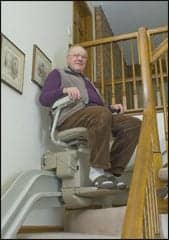The Journal of Rehabilitation Research and Development (JRRD), a peer-reviewed, scientifically indexed journal published by the Department of Veterans Affairs, Washington, DC, has released Volume 48, Issue 2.
Manuscripts in the issue include the following:
Telerehabilitation assessment using the Functioning Everyday with a Wheelchair-Capacity instrument, page 115
For many veterans, traveling to a medical center or hospital can be a complicated and sometimes difficult task because of where they live, their diagnosis, or a lack of transportation. The VA has been recognized as a leader in telehealth. Specifically, telerehabilitation allows the delivery of rehabilitation services remotely. In this study, researchers used videoconferencing technology to allow an expert practitioner to connect with a client and other practitioners more than 100 miles away to examine how individuals functionally operate their wheelchairs and to recommend new wheeled mobility devices. This technology will decrease travel time and assist with care coordination.
Medical utilization and cost outcomes for poststroke veterans who receive assistive technology devices from the Veterans Health Administration, page 125
This study examined the relationship between provision of assistive technology devices (ATDs) and health care consumption and outcomes in a system that does not limit provision of ATDs to in-home use and determined how the provision of ATDs relates to inpatient/outpatient use and costs of services for veterans 12 months post-stroke. This retrospective study used VA administrative/workload databases to identify veterans with stroke. Researchers found that providing mobility ATDs to veterans predicts greater functional gain while in the hospital and, most notably, greater outpatient visits, indicating these devices may enable better outpatient health care. However, ATD recipients did have longer length of stay.
Driving electromechanically assisted Gait Trainer for people with stroke, page 135
In the last decade, devices for electromechanically assisted gait training have been developed to allow nonambulatory patients to practice intensive, task-oriented exercise. The researchers’ review of this training focuses on body-weight support, walking speed, and harness accelerations. The original study provides interesting results suitable for properly selecting parameters in electromechanically assisted gait training that can increase the treatment effectiveness for patients with subacute stroke.
Effect of prosthetic design on center of pressure excursion in partial foot prostheses, page 161
Research on the gait of people with partial foot amputation suggests that effective foot length can be restored if the prosthesis has a stiff forefoot, has an above-ankle anterior shell, and restricts dorsiflexion. By independently manipulating these design features of the prosthesis in two participants with partial foot amputation, the researchers showed (using 3-D motion analysis) that the prosthesis must include each of these design features to restore effective foot length. When these design features were used at the same time, the participants’ gait pattern was more like that of people without limb loss.
[Source: JRRD]




